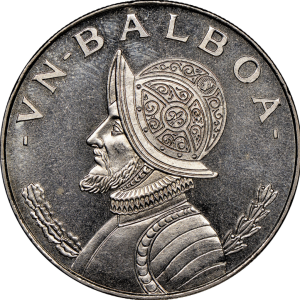What is the currency in Panama? It’s a fair question and a common one when looking at relocation or foreign financial investment options. One intriguing aspect of Panama’s economic landscape is its unique relationship with currency. Panama is known for using the United States dollar as its official currency, but there’s another player in the monetary game – the Panamanian Balboa. In this deep dive into Panama’s currency, we’ll unravel the fascinating story behind the dual currency system and explore how it has positioned Panama as an international business hub.
The Dual Currency System
While it may seem unusual for a country to adopt the currency of another nation, Panama’s use of the US dollar has deep historical roots. Dating back to the early 20th century, the Panamanian economy became intertwined with that of the United States during the construction of the Panama Canal. The adoption of the US dollar as the official currency in 1904 facilitated smoother transactions for the American workers and businesses involved in the canal project.
Despite using the US dollar for more than a century, Panama has its own distinct currency – the Balboa. Interestingly, the Balboa is pegged to the US dollar at a 1:1 exchange rate. This means that one Balboa is equivalent to one US dollar, and both currencies circulate freely within the country. In reality, however, Balboa coins are used much less frequently than US dollar bills, which dominate daily transactions.
The Panamanian Balboa: A Symbolic Currency
The Panamanian Balboa, named after Spanish explorer Vasco Núñez de Balboa, who played a pivotal role in the discovery of the Pacific Ocean, has been a symbol of national identity since its introduction in 1904. The Balboa has both coins and banknotes, with the former being more commonly used. Coins come in denominations of 1, 5, 10, 25, and 50 centésimos, while banknotes are rarer and come in denominations of 1, 5, 10, 20, 50, and 100 Balboas.
Although the Balboa is legal tender, the dominance of the US dollar in everyday transactions has relegated the Balboa to more of a symbolic role. Balboa coins are often collected as souvenirs, and the limited circulation of Balboa banknotes makes them a unique and sought-after item among collectors.
Trade and International Business
Panama’s decision to adopt the US dollar has played a crucial role in fostering a stable economic environment, attracting foreign investment, and promoting international trade. By aligning its currency with that of the United States, Panama has eliminated exchange rate uncertainties that can hinder trade. This has made it an attractive destination for businesses looking to establish a foothold in Central America.
The use of the US dollar also facilitates trade relations with the United States, Panama’s largest trading partner. The absence of currency conversion costs and the familiarity of the US dollar in global markets simplify transactions, making it easier for Panamanian businesses to engage in international trade.
Furthermore, the stability of the US dollar provides a reliable foundation for Panama’s banking and financial sectors. Foreign investors are drawn to the transparency and predictability that come with operating in a country that uses a strong, globally recognized currency. This has contributed to Panama’s emergence as a financial hub in the region, hosting numerous international banks and financial institutions.
Foreign Investments and Economic Growth
Panama’s currency system has been instrumental in attracting foreign investments, contributing significantly to the country’s impressive economic growth. The stability offered by the US dollar has created a favorable climate for foreign investors, who appreciate the reduced risks associated with currency fluctuations.
Additionally, Panama’s strategic location as a bridge between North and South America, combined with its robust infrastructure, has positioned the country as a gateway for foreign businesses seeking to expand into the broader Latin American market. The use of the US dollar simplifies financial transactions and mitigates concerns related to currency volatility, making Panama an attractive destination for multinational corporations.
The Panamanian government has actively promoted foreign direct investment through various initiatives, including tax incentives, streamlined bureaucracy, and investor-friendly policies. As a result, Panama has experienced sustained economic growth, outpacing many of its regional counterparts.
Challenges and Considerations
While Panama’s dual currency system has undoubtedly brought numerous benefits, it is not without its challenges. The country must remain vigilant in managing inflation, as it lacks control over its monetary policy by not having its own currency. This dependency on the US Federal Reserve’s policies exposes Panama to potential economic shocks that may originate beyond its borders.
Furthermore, the reliance on the US dollar makes Panama vulnerable to external economic pressures. Economic downturns in the United States can have a cascading effect on Panama, impacting its trade, investment, and overall economic performance. To mitigate these risks, Panama must continue to diversify its economy and explore new avenues for growth.
What is the currency in Panama from an international approach?
Panama’s unique approach to currency, utilizing the US dollar as its official currency while maintaining the Panamanian Balboa as a symbolic representation, has proven to be a strategic move. What is the currency in Panama when looked at from this perspective? This dual currency system has not only fostered stability in the domestic economy but has also positioned Panama as an attractive destination for international trade and investment.
The alignment with the US dollar has facilitated seamless trade relations, attracted foreign investors, and contributed to Panama’s emergence as a regional financial hub. As the country continues to navigate the complexities of the global economy, the careful balance between the US dollar and the Panamanian Balboa will remain a defining feature of Panama’s economic landscape. In this dance between currencies, Panama strives to maintain its position as a beacon of economic stability and opportunity in Central America. To learn more about the currency in Panama, contact us here now.
